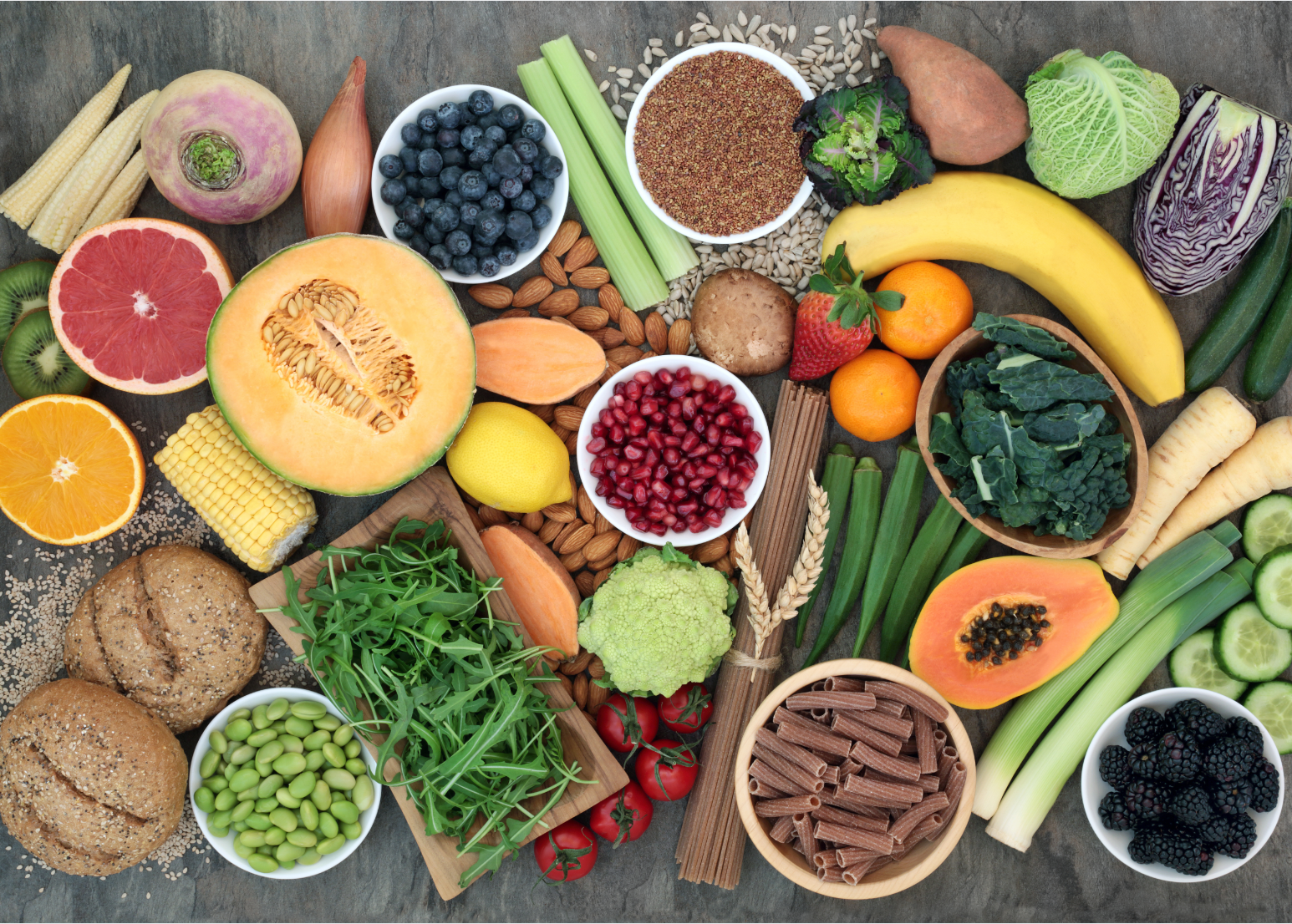
40 most nutritious fruits and vegetables, according to experts
40 most nutritious fruits and vegetables, according to experts
While it's common knowledge that eating fruits and vegetables is good for one's health, incorporating them into daily diets can be more challenging. On average, just one in every 10 adults in the U.S. meets the recommended intake allowance of 2 to 3 cups per day for fruits and vegetables, according to a 2017 government health report. That rate is even lower among men and young adults.
Getting enough fruits and greens isn't just about keeping one's weight down or that daily dose of vitamins: Fruits and vegetables contain phytonutrients, which are naturally occurring chemicals in plants that contribute to the plant's health. When consumed, those phytonutrients also contribute to human health. Phytonutrients work as antioxidants, which help with immunity, repair DNA damage, and detoxify carcinogens. A phytonutrient-rich diet may lower the risk of certain cancers and heart disease.
In a 2015 study of global food and nutritional data, researchers calculated each food's nutritional fitness via factors such as nutrient-density, protein levels, and calorie content. Nutritional fitness gauges food quality based on its overall nutritional balance and composition. Raw foods were researched first, followed by minimally altered frozen or dried products. For recommended daily allowances of nutrients, researchers referred to the Dietary Reference Intakes from the Institute of Medicine of the U.S. National Academies, which calculates daily nutrients required for adequate health and energy levels.
Stacker created a comprehensive list of the 40 most nutritious fruits and vegetables available, ranked by nutritional fitness scores, with the highest score being 1.00. Ties in nutritional fitness were broken by price per 100 grams (approximately 3.5 ounces), with lower-priced foods being ranked higher; meat, fish, and other animal products were excluded from the list.
Read on to discover some of the best nutritional choices for getting the recommended daily intake of fruits and vegetables.
You may also like: States with the biggest agriculture industry
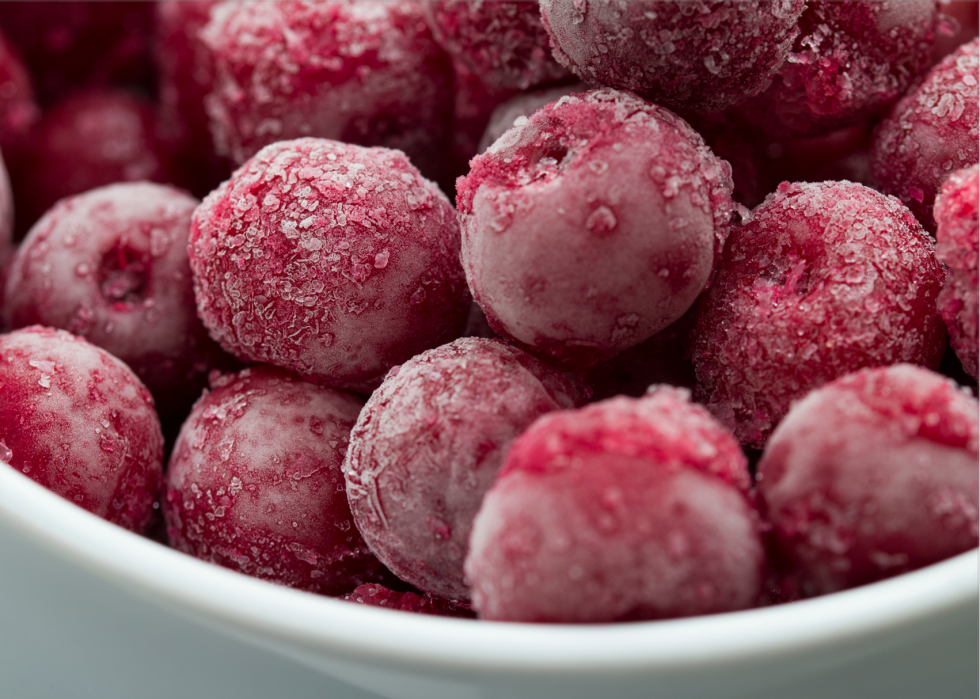
#40. Sour red cherries (frozen)
- Nutritional fitness score: 0.53
- Known for being: Rich in carbohydrates
- Price per 100 grams: $0.58
Available in the freezer section of most supermarkets, sour cherries aren't as sugary as their sweeter cousins and contain more vitamin A than blueberries, as well as tons of powerful antioxidants. Sour or tart cherry juice may help post-exercise muscle recovery, decrease cholesterol, and improve heart health. Frozen sour cherries can be used in pies or desserts for a tart treat, or they can be pressed in a juicer for a refreshing and healthy drink.
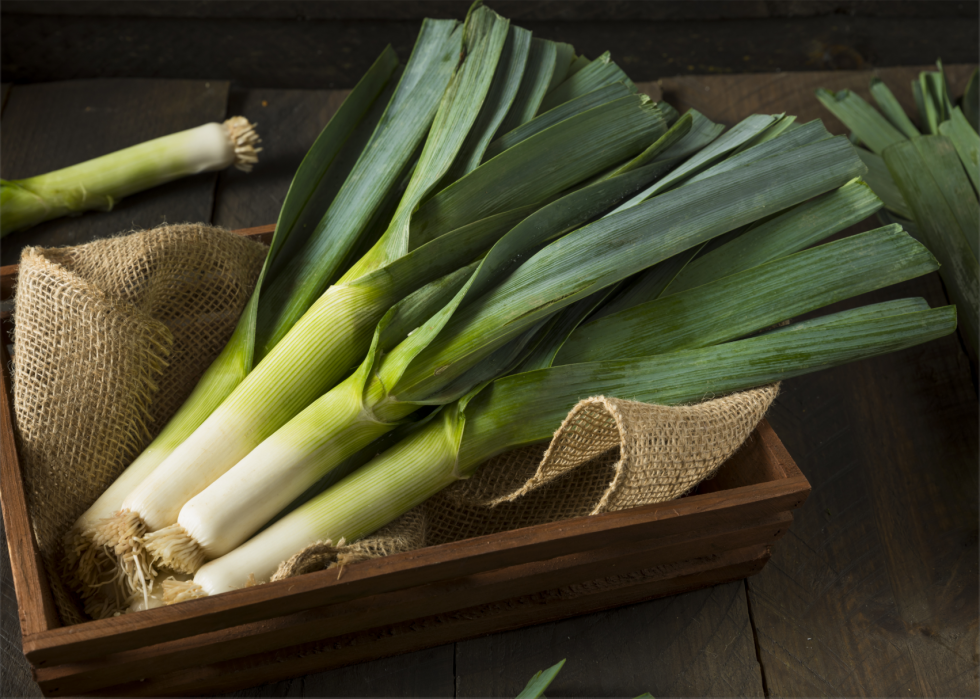
#39. Leeks (raw)
- Nutritional fitness score: 0.54
- Known for being: Low-calorie
- Price per 100 grams: $1.83
Part of the same family as garlic and onions, leeks are readily available in produce sections of the grocery store. High in folate, which supports cardiovascular health, and rich in antioxidants, leeks can be used in nearly any dish and can be baked, sauteed, grilled, or tossed into a salad.
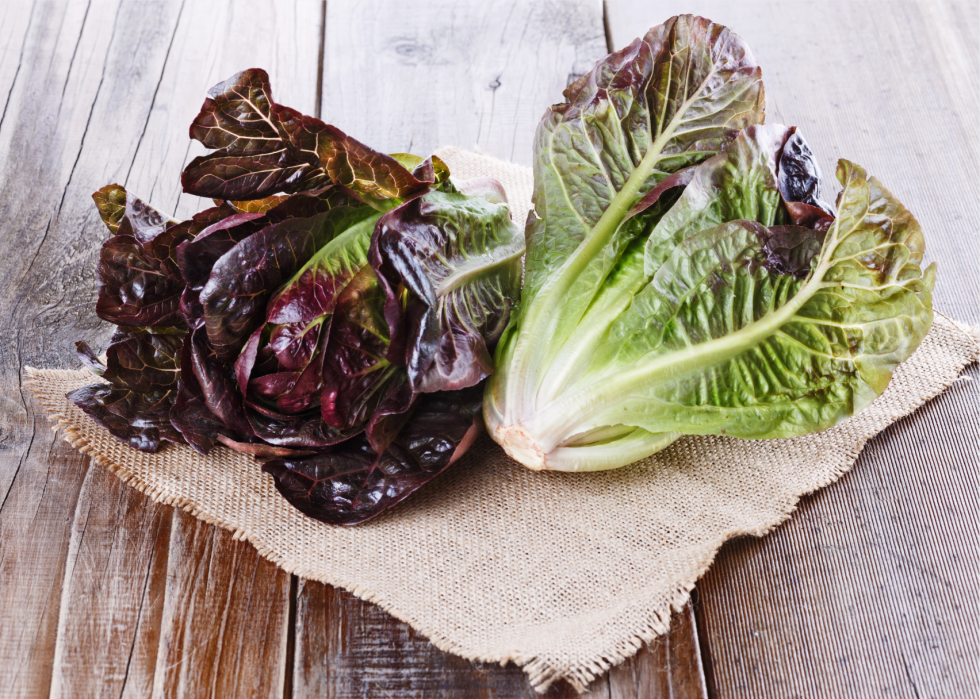
#38. Red leaf lettuce (raw)
- Nutritional fitness score: 0.54
- Known for being: Low-calorie
- Price per 100 grams: $1.55
Red leaf lettuce adds a little pizzazz to any salad, as well as a boost of vitamins A and K. While it's considered a zero-calorie food, the added vitamins and flavor make it a better choice than other zero-calorie greens like iceberg lettuce, which has high water content and only trace amounts of vitamins.
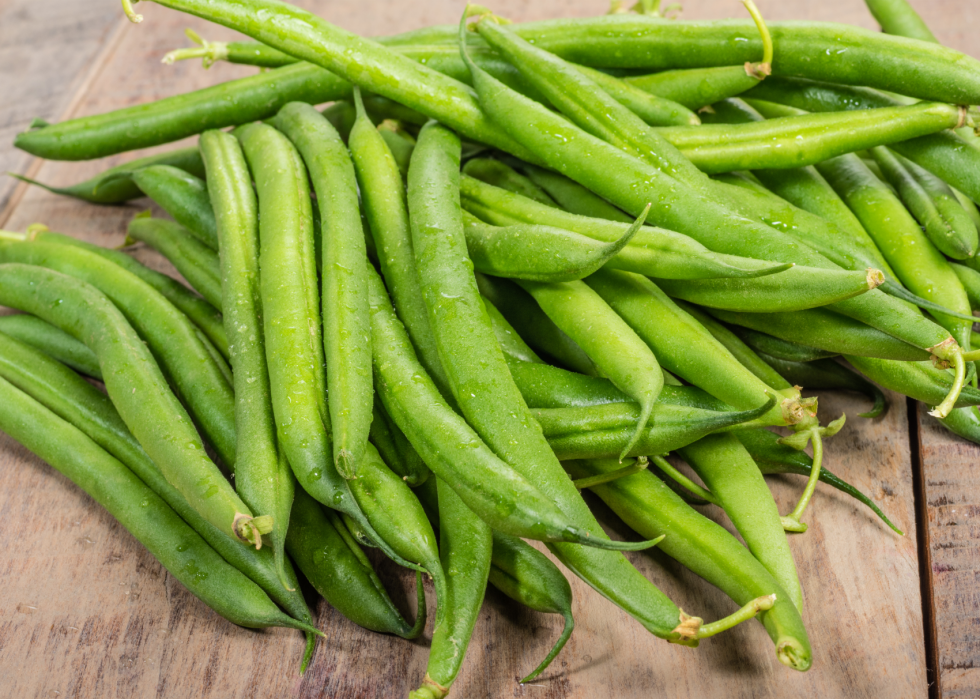
#37. Green snap beans (raw)
- Nutritional fitness score: 0.54
- Known for being: Low-calorie
- Price per 100 grams: $0.28
Rich in vitamins A, C, and K, as well as folic acid and fiber, fresh green beans can be an excellent choice for a healthy side dish or as part of a salad. There are more than 130 different varieties of green beans, many of which are found in the produce section of any grocery store, specialty store, and farmer's market. Fresh is better, as half a cup of canned green beans may contain more than 300 micrograms of sodium.
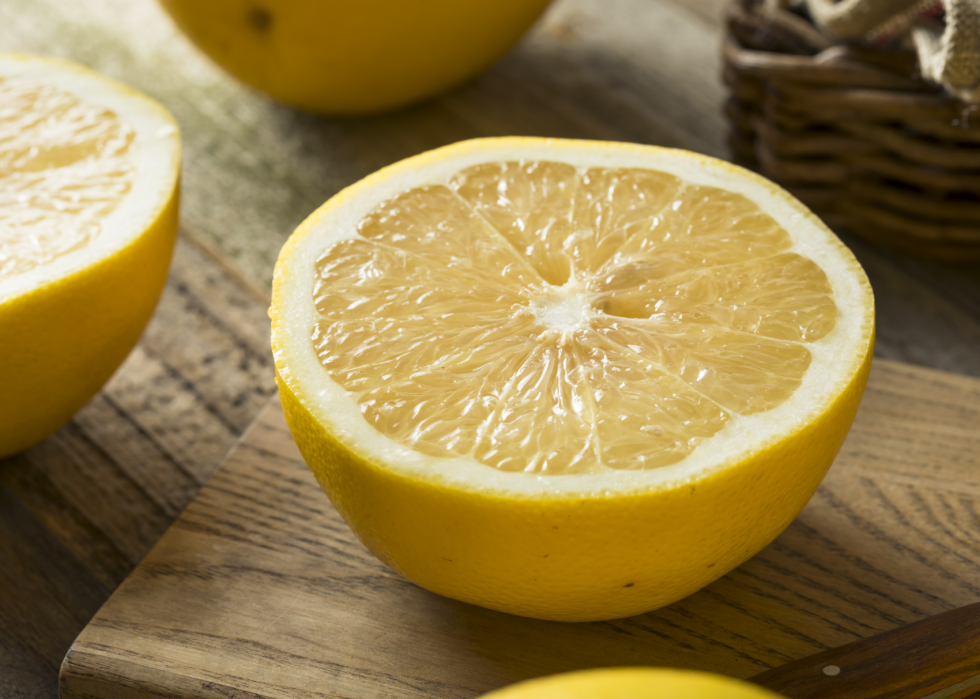
#36. White grapefruit (raw)
- Nutritional fitness score: 0.54
- Known for being: Rich in carbohydrates
- Price per 100 grams: $0.27
Grapefruit has long been touted as a magical solution for weight loss, and while studies have recently debunked that theory, it's still an excellent choice for a healthy diet. Full of potassium, lycopene, vitamin C, and choline, consuming grapefruit may help improve lipid levels and blood pressure as well as reduce the risk of stroke. All that vitamin C is also great for the skin, whether eating it or applying it topically. Note that grapefruit may interact with certain medications, such as statins, so be sure to consult with your physician if you're planning to regularly consume the citrus fruit.
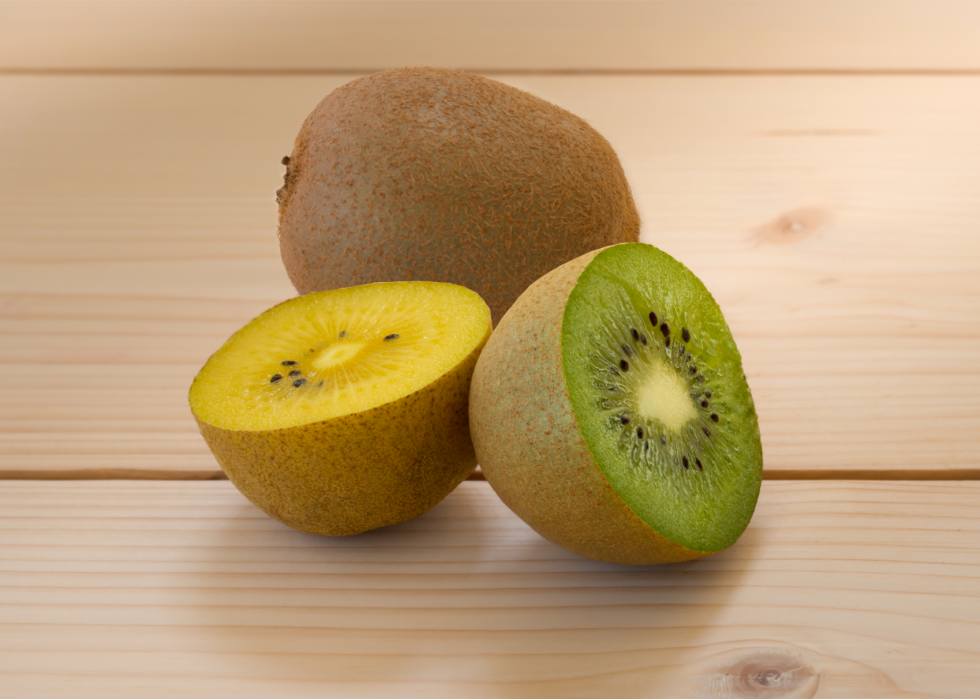
#35. Gold and green kiwi fruit (raw)
- Nutritional fitness score: 0.54
- Known for being: Rich in carbohydrates
- Price per 100 grams: $0.22
Once only found in gourmet markets, fresh kiwi has become mainstream and is a staple at most grocery stores. Both gold and green kiwis are high in a natural digestive enzyme called actinidin and vitamin C. While many people think kiwis have to be peeled before eating, the entire fruit is edible, and recent studies indicate that consuming the skin nearly triples the fiber intake.
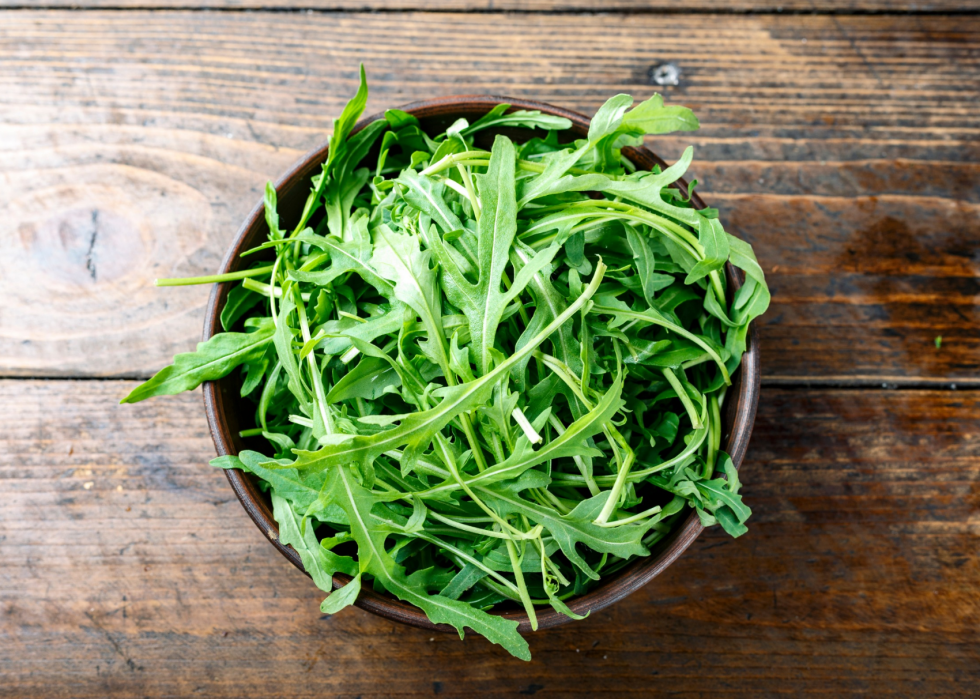
#34. Arugula (raw)
- Nutritional fitness score: 0.55
- Known for being: Low-calorie
- Price per 100 grams: $0.48
This zesty Mediterranean green, also known as Italian cress or rocket, has a peppery flavor that adds a kick to any dish. High in fiber, calcium, potassium, and folate, it can be served as part of a salad, on sandwiches and pizza, or even as an alternative to basil when making pesto. Arugula can also be added to cooked dishes, giving it a mellower flavor.
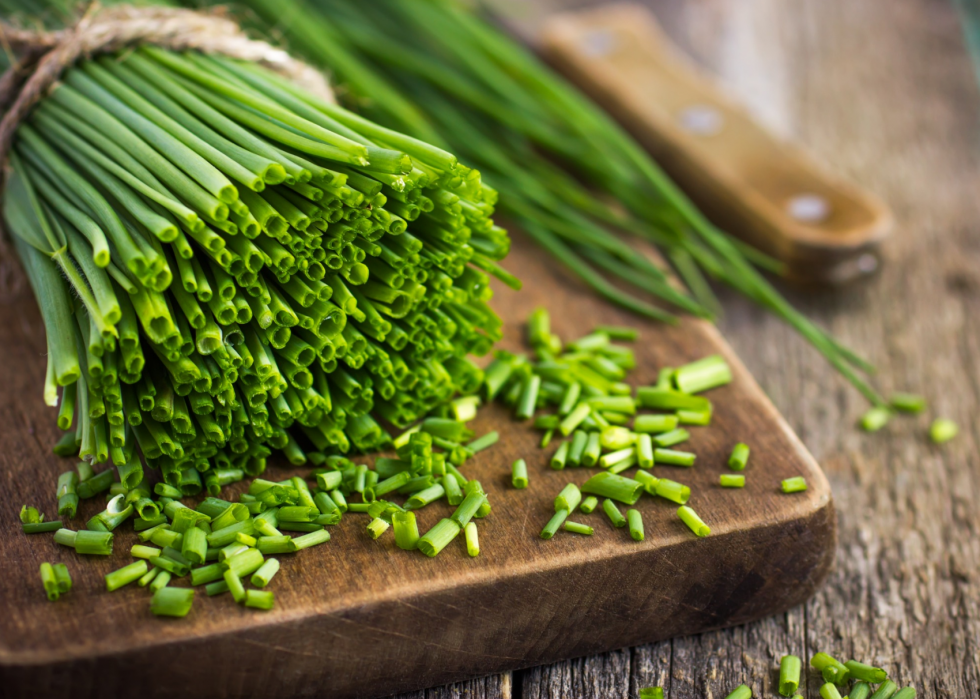
#33. Chives (raw)
- Nutritional fitness score: 0.55
- Known for being: Low-calorie
- Price per 100 grams: $0.22
Nutrient-dense chives are much more than just a topping for potatoes. Rich in folate, calcium, magnesium, and vitamin K, research indicates that eating chives may help reduce the risk of some cancers, and their high choline content can help improve sleep, memory, and mood. Chives are usually available with other fresh herbs at the grocery store, and they are also quite easy to grow in a garden or container.
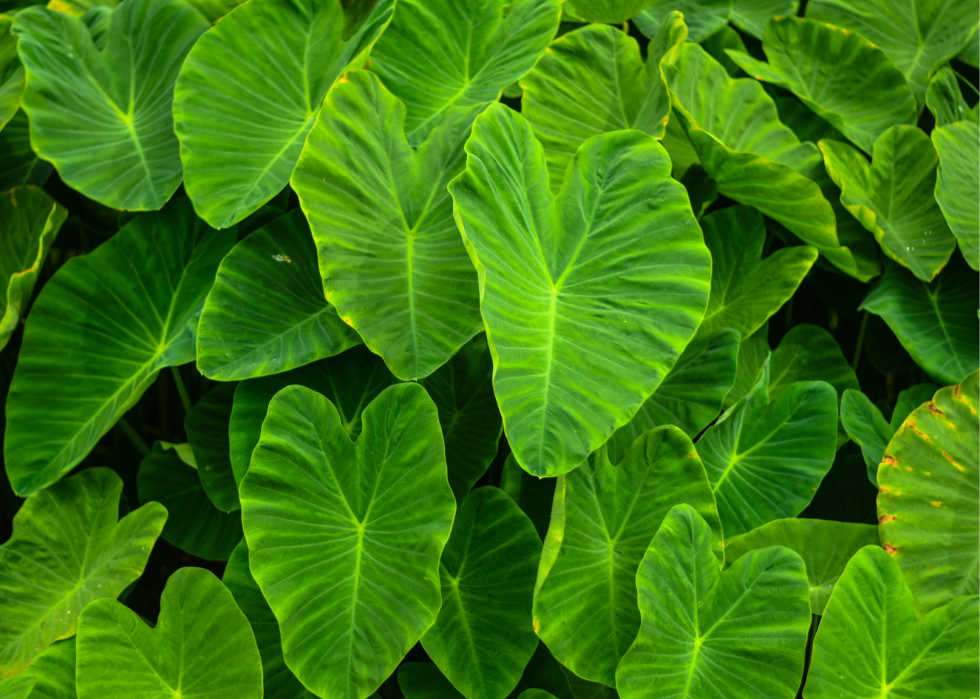
#32. Taro leaves
- Nutritional fitness score: 0.56
- Known for being: Low-calorie
- Price per 100 grams: $2.19
An inherent part of the culture and cuisine of the Pacific Islands, taro leaves aren't just a unique and flavorful addition to a recipe; they also contain many nutrients and antioxidants. Taro grows wild in many tropical areas and can be purchased at specialty or gourmet grocers. The leaves are rich in vitamin C, vitamin A, omega-3 fatty acids, and folate, and they are high in protein while also being low in fat. Taro leaves can be toxic in their raw form, so it's important to soak them in water and cook them for at least 15 minutes before eating.
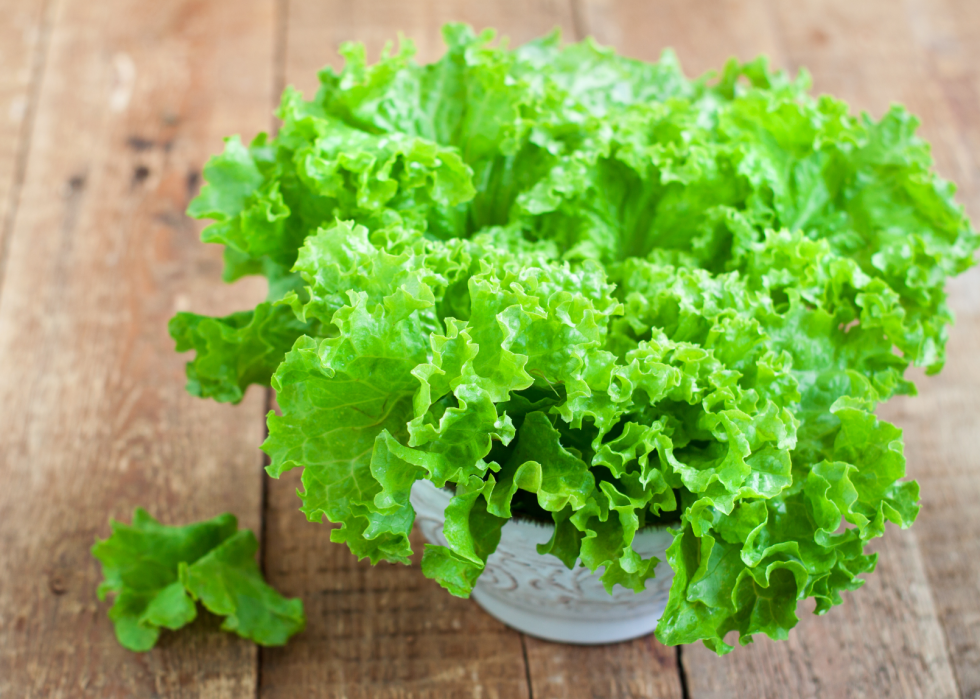
#31. Green leaf lettuce (raw)
- Nutritional fitness score: 0.56
- Known for being: Low-calorie
- Price per 100 grams: $1.55
Mild in flavor, dense in nutrients, green leaf lettuce makes for the perfect salad mix or sandwich topper. With vitamin K and vitamin A carotenoids beta-carotene, lutein, and zeaxanthin, just 1 cup of shredded green leaf lettuce provides 88% of recommended vitamin A needs, as well as 38% of the recommended vitamin K allowance.
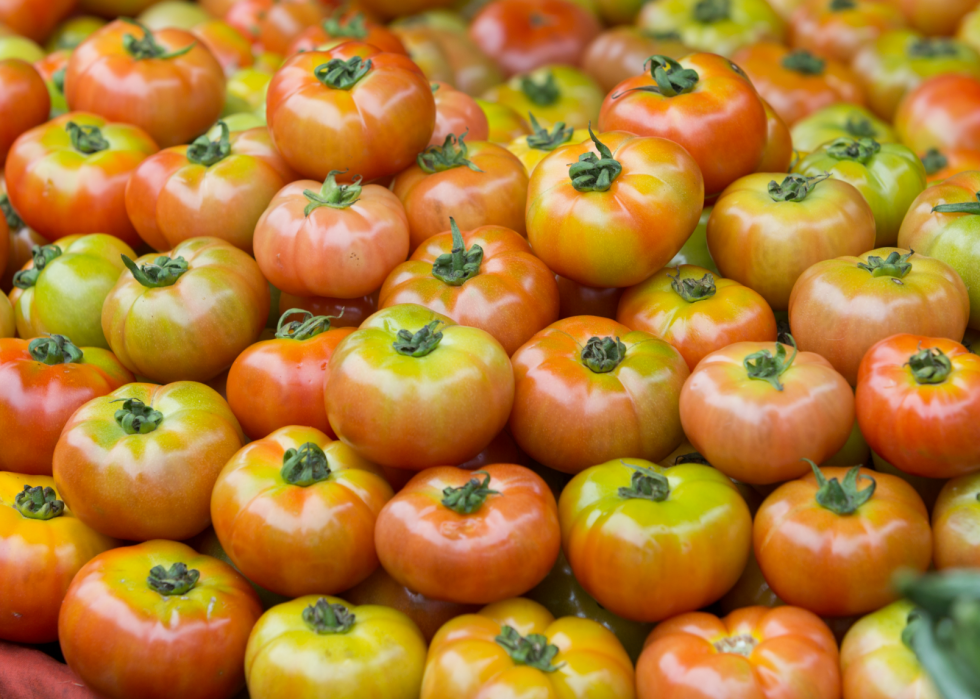
#30. Red and green tomatoes (raw)
- Nutritional fitness score: 0.56
- Known for being: Low-calorie
- Price per 100 grams: $0.15
Technically, tomatoes are a fruit, but most people prepare them as a vegetable and serve them with veggies. Originally from South America, tomatoes can be found in any grocery store and are easy to grow in gardens and containers. Red and green tomatoes are a good source of fiber, vitamin C, potassium, vitamin K, and folate. Tomatoes also contain lycopene, an antioxidant that offers numerous health benefits like reducing the risk of heart disease.
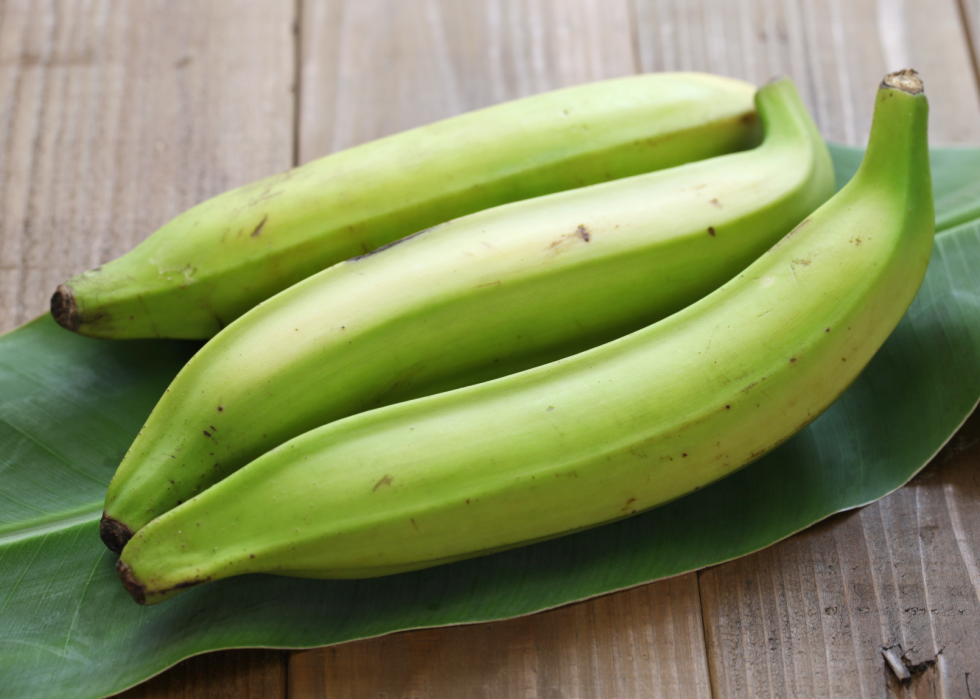
#29. Plantains (raw)
- Nutritional fitness score: 0.57
- Known for being: Rich in carbohydrates
- Price per 100 grams: $0.38
Starchy like a potato, but high in vitamin C, vitamin A, vitamin B-6, potassium, and magnesium, plantains are an often-overlooked superfood. They are common in many tropical climates, but not as popular in the U.S., despite being available at many grocery stores. Plantains aren't as sweet as traditional bananas and should be cooked before eating. They can be sauteed, baked, or grilled, and they work well as a side dish to any protein or salad.
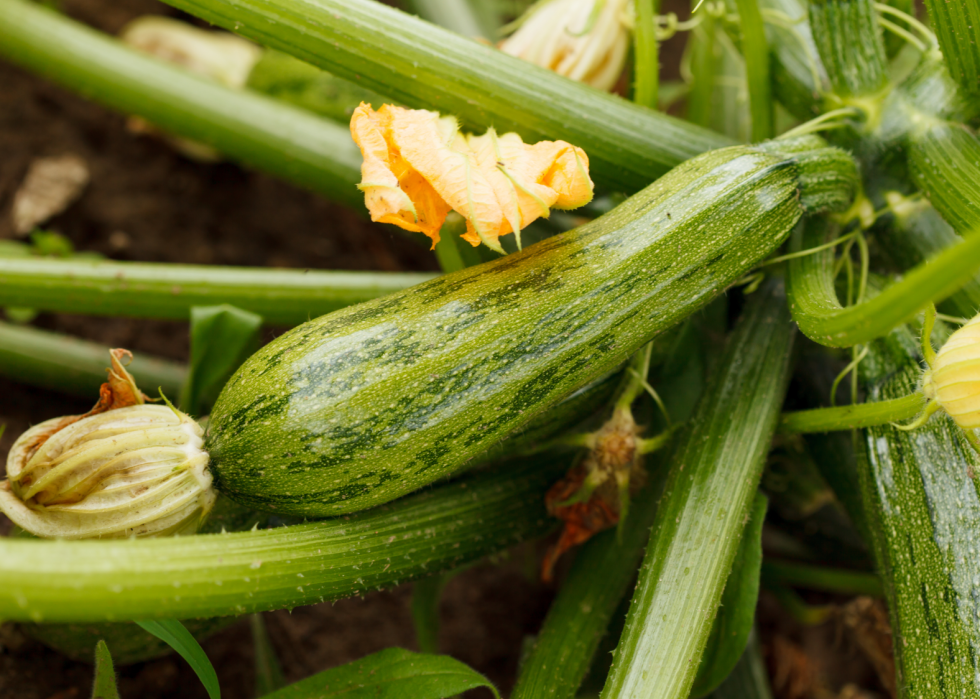
#28. Summer zucchini squash (raw)
- Nutritional fitness score: 0.57
- Known for being: Low-calorie
- Price per 100 grams: $0.22
Gardeners like zucchini because it is easy to grow, but there's much more to zucchini than a plentiful harvest. With vitamins B6, K, and C, as well as potassium and riboflavin, eating zucchini can help improve digestion, lower blood sugar, and provide support for heart health. They can be baked or grilled, tossed into a salad, or used in place of chips with a favorite dip.
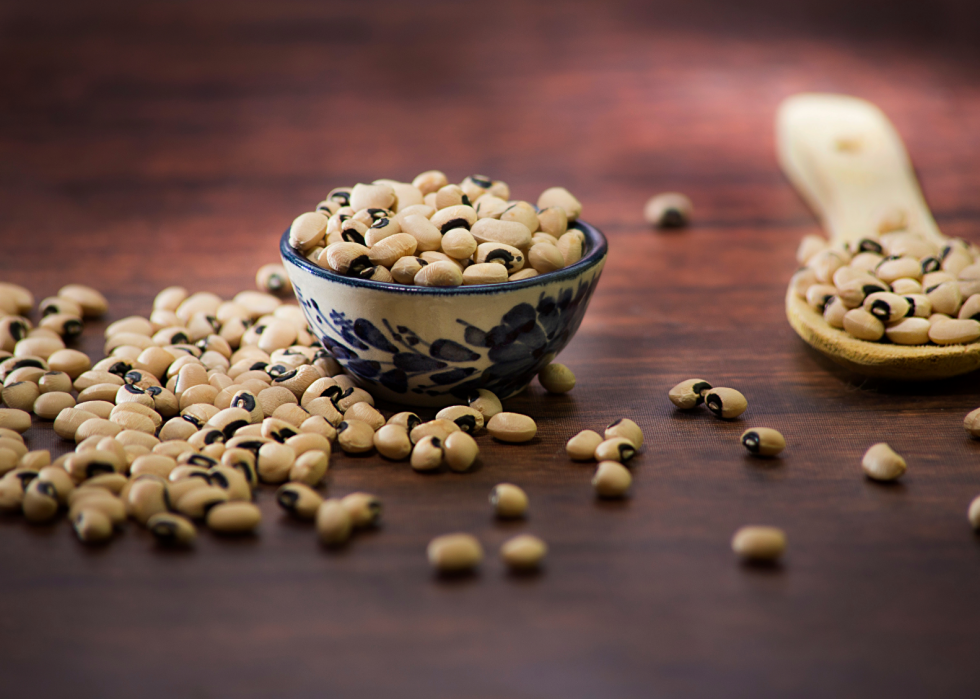
#27. Cowpeas (raw)
- Nutritional fitness score: 0.58
- Known for being: Low-calorie
- Price per 100 grams: $0.68
Primarily grown in Asia, Africa, and other dry climates, these nutritious legumes are packed with protein and fiber, along with vitamins B1 and C. Cowpeas also have high levels of magnesium, which contributes to bone health and can improve sleep. And while most people stick to just eating the peas themselves, the leaves and pods are edible as well and contain just as much nutritional value.
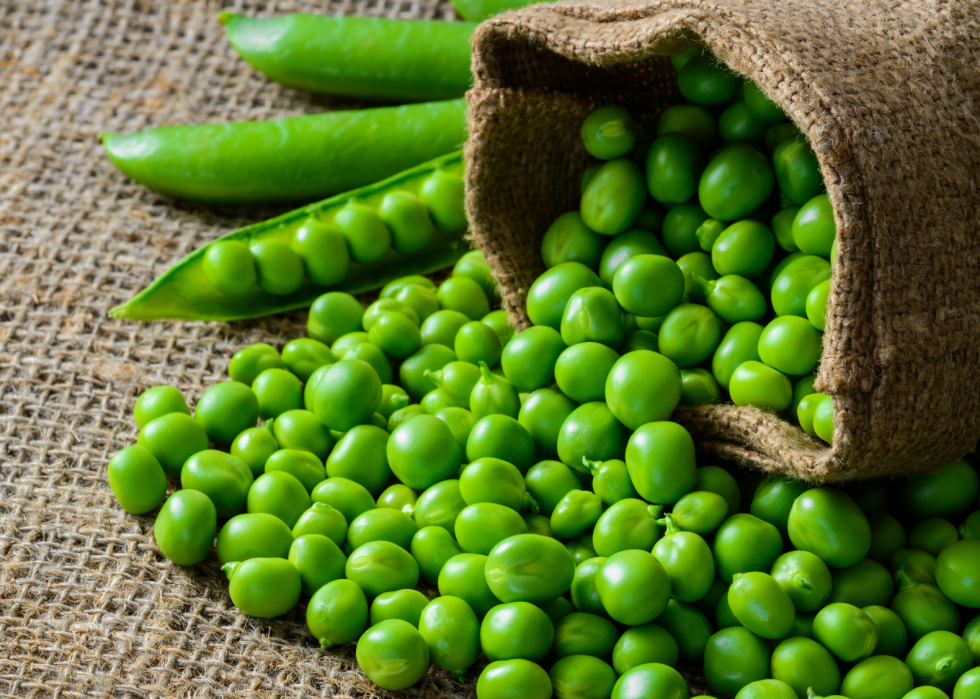
#26. Peas (raw)
- Nutritional fitness score: 0.58
- Known for being: Low-calorie
- Price per 100 grams: $0.62
Green peas are a nutritional dynamo, with a unique combination of phytonutrients that provide essential antioxidants and can help with inflammation, heart health, and reduce the risk of some cancers. Rich in vitamins K, C, B1, and B6, as well as folate and fiber, peas can be a delicious addition to a salad or steamed as a side dish. Fresh peas are usually available on a seasonal basis at grocers or farmer's markets, and frozen peas, which retain more vitamin C in their frozen state, can be found year-round.
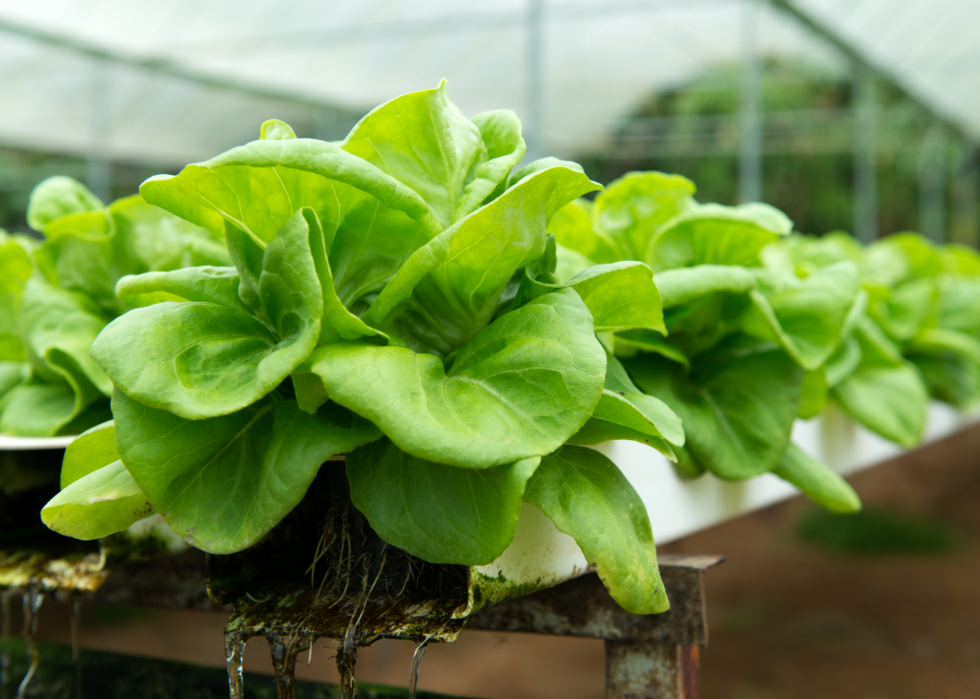
#25. Butterhead lettuce (raw)
- Nutritional fitness score: 0.58
- Known for being: Low-calorie
- Price per 100 grams: $0.39
Butterhead lettuce is a low-calorie salad option with a mild, slightly sweet flavor and plenty of nutrients. With high doses of vitamin A, calcium, thiamin, niacin, and riboflavin, consuming this leafy green helps maintain a healthy immune system, as well as keeping organs functioning properly. The large, loose leaves make it an excellent choice for making lettuce wraps, and it tends to be easier to wash than other varieties.
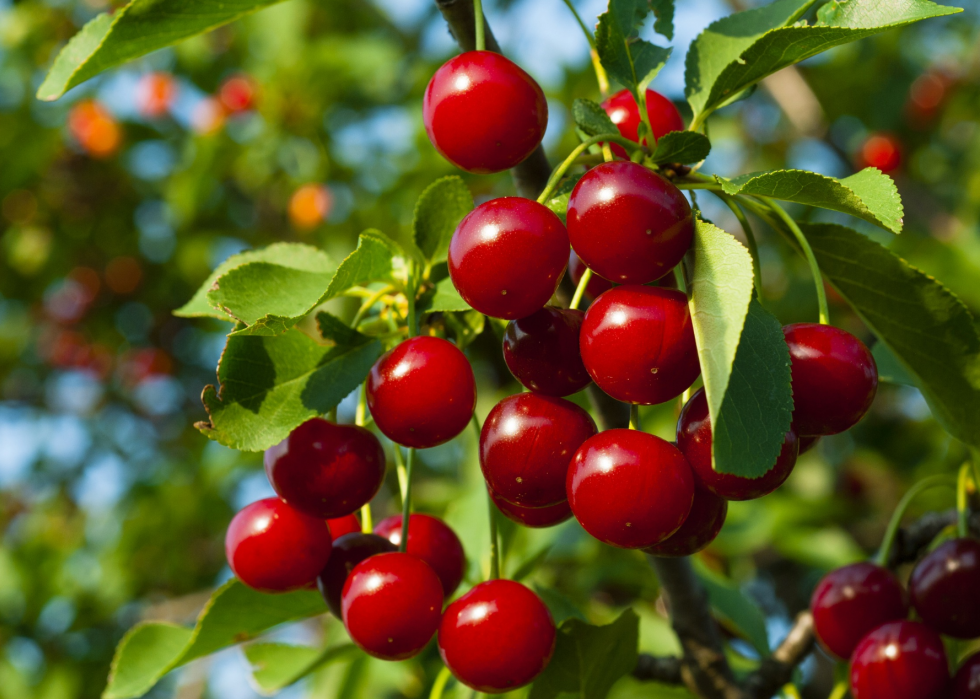
#24. Sour red cherries (raw)
- Nutritional fitness score: 0.58
- Known for being: Rich in carbohydrates
- Price per 100 grams: $0.33
Just as nutritional as the frozen version, raw sour cherries can be found seasonally at farmer's markets and are sometimes available at gourmet grocers. Sour cherries are low in fat and calories but have tons of potassium and vitamin A, both of which help inflammation and muscle recovery. Drinking sour cherry juice is said to help repair muscles after workouts, and the naturally occurring melatonin in sour cherries can contribute to better sleep. They can be eaten raw, but tend to taste better when cooked into other dishes.
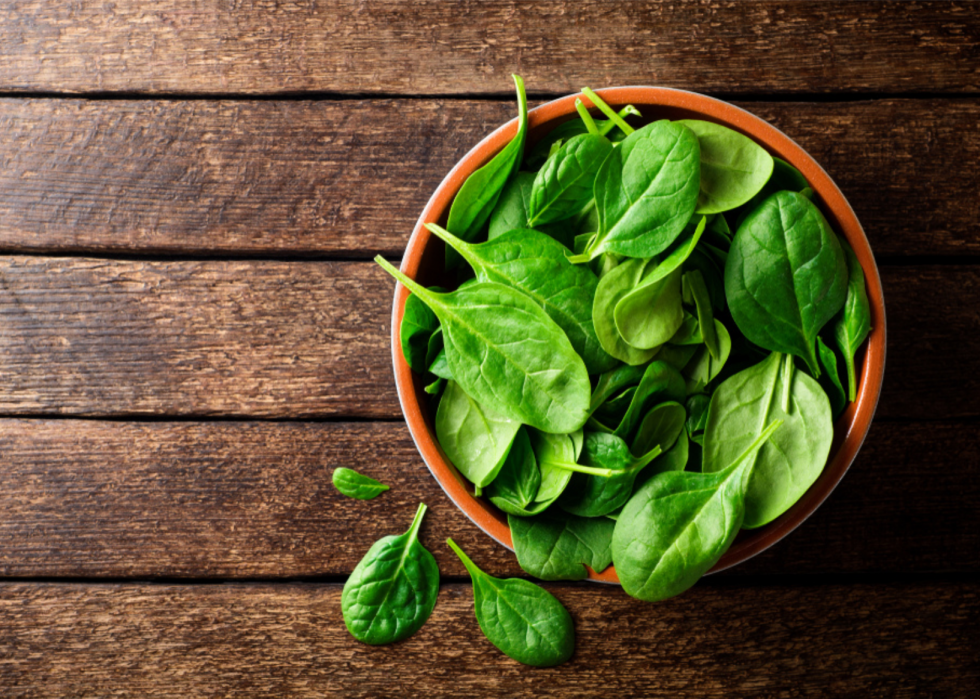
#23. Spinach (raw)
- Nutritional fitness score: 0.59
- Known for being: Low-calorie
- Price per 100 grams: $0.52
Popeye was right about this superfood, as consuming raw or cooked spinach has a plethora of health benefits. Originating from Mediterranean and Middle Eastern cultures, it can be found in the produce section of most grocery stores. Just 1 cup of spinach contains 30 milligrams of calcium, 24 milligrams of magnesium, and a whopping 167 milligrams of potassium, all of which contribute to bone, muscle, and heart health. Raw spinach can be served as a salad, sauteed with other veggies, or added to a main baked dish for a nutritional boost.
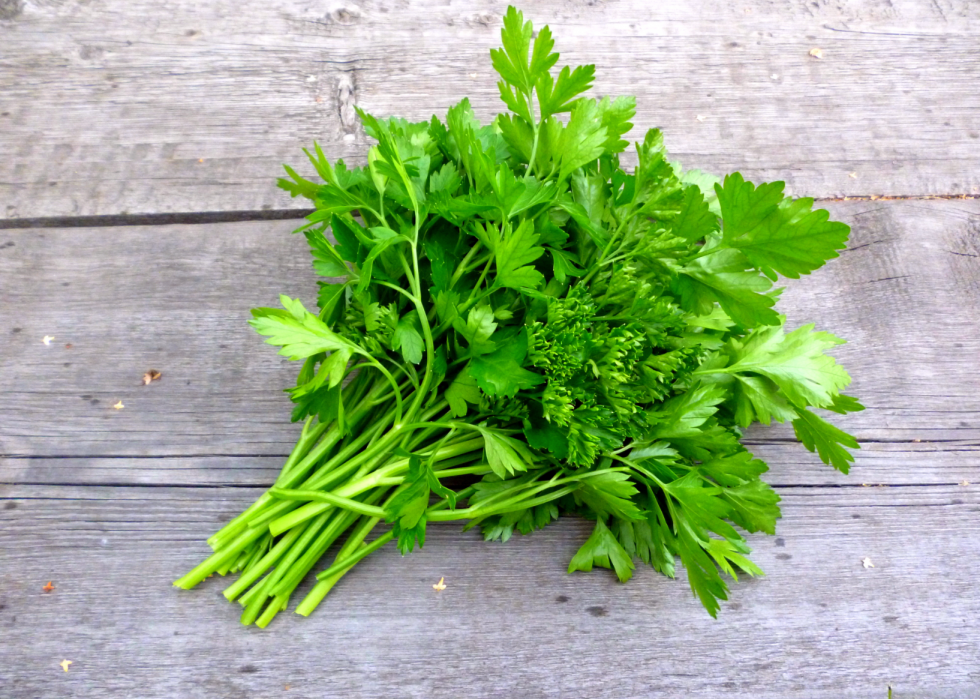
#22. Parsley (fresh)
- Nutritional fitness score: 0.59
- Known for being: Low-calorie
- Price per 100 grams: $0.26
More than just a garnish, fresh parsley is a nutrient-rich green with a clean flavor and multiple health benefits. Parsley contains high levels of a flavonoid called apigenin, which has anti-inflammatory properties, as well as folic acid and vitamins A, B, C, and K. Parsley works well added to pasta or salads, and eating parsley after a meal helps freshen breath and aid digestion.
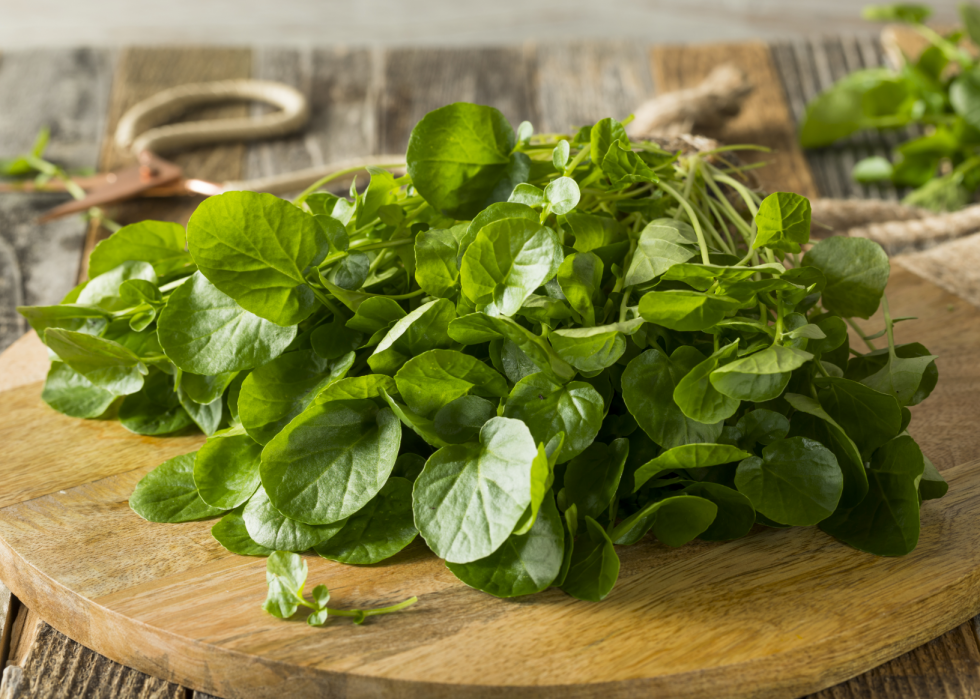
#21. Cress (raw)
- Nutritional fitness score: 0.60
- Known for being: Low-calorie
- Price per 100 grams: $4.49
A garden herb that originated in Persia, cress is part of the cruciferous family. It is available at most specialty shops and farmer's markets and can be grown quite easily in small gardens or containers. Cress is a good source of vitamins K, C, and A, as well as iron and potassium. It has a strong peppery taste that works well with salads or as a sandwich topper.
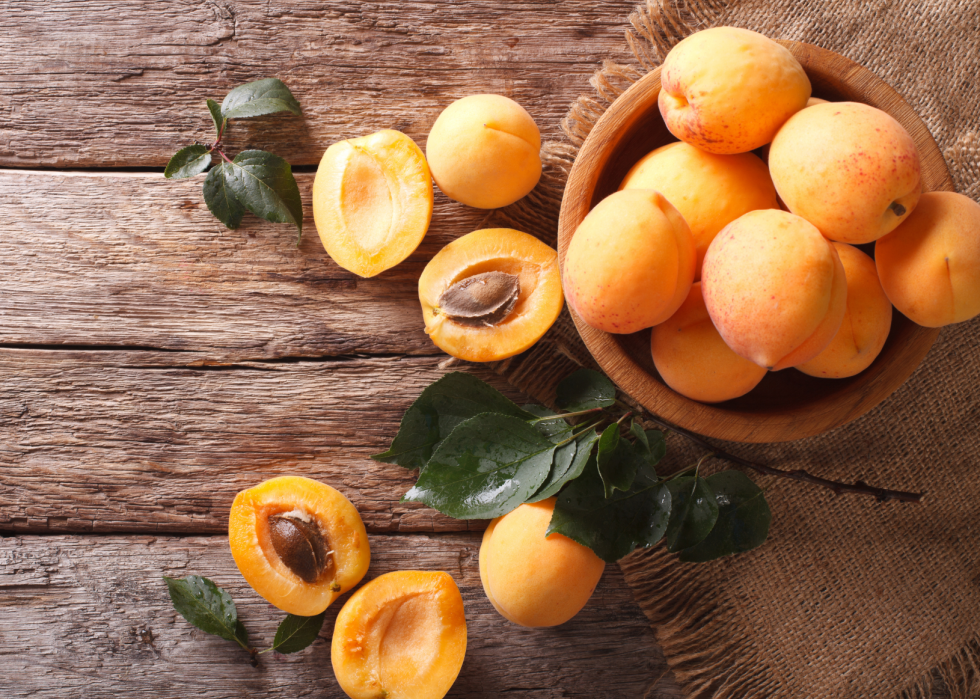
#20. Apricots (raw)
- Nutritional fitness score: 0.60
- Known for being: Rich in carbohydrates
- Price per 100 grams: $0.36
Available seasonally from May through August, fresh apricots contain a host of antioxidants, along with vitamins A and C. They are also rich in carotenoids, which can help protect eyesight, as well as the flavonoid phytonutrients catechins, which have been found to reduce inflammation. Smaller than a peach and slightly tart, they can be cooked in a dessert, grilled, or served fresh all on their own.
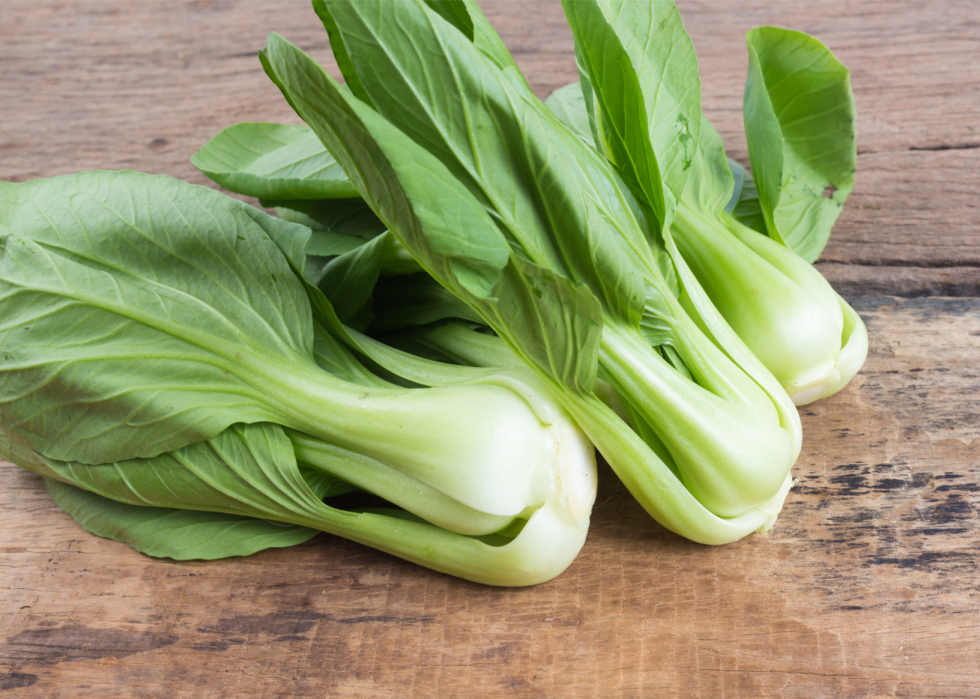
#19. Chinese bok choy cabbage (raw)
- Nutritional fitness score: 0.60
- Known for being: Low-calorie
- Price per 100 grams: $0.11
Chinese cabbage, also known as Napa cabbage is part of the Brassica family, which includes Brussels sprouts, kale, and broccoli. It can be found at most grocery or specialty food shops and can be cooked into a variety of dishes, shredded into coleslaw or used as a sandwich topper. An excellent source of folate, 100 grams of cabbage provides 20% of the daily recommended allowance, as well as high levels of vitamins C and K.
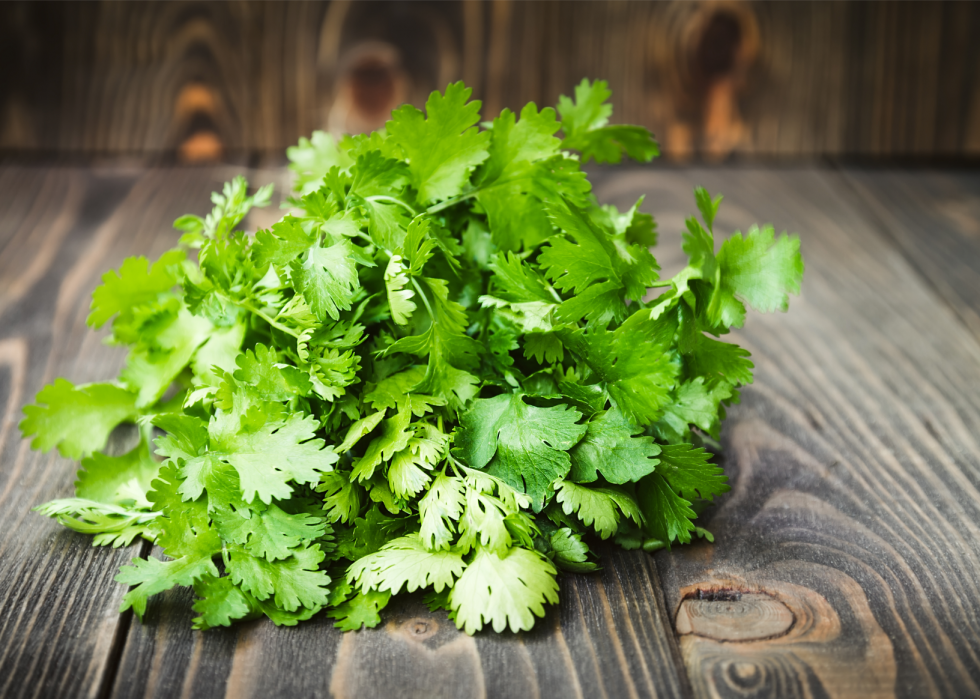
#18. Coriander / cilantro leaves (raw)
- Nutritional fitness score: 0.61
- Known for being: Low-calorie
- Price per 100 grams: $7.63
Cilantro is a leafy herb that is similar to parsley and commonly added to soups, salads, and dips. It was brought to the British colonies in North America in the 1600s and cultivated by early settlers. Cilantro seeds are typically ground into the spice known as coriander but are also edible whole. The plant and seeds contain high levels of carotenoids, which can help in the prevention of some cancers and eye disease. Those with food allergies should use caution when consuming coriander, as the seeds are similar to celery or fennel seeds in potentially causing allergic reactions.
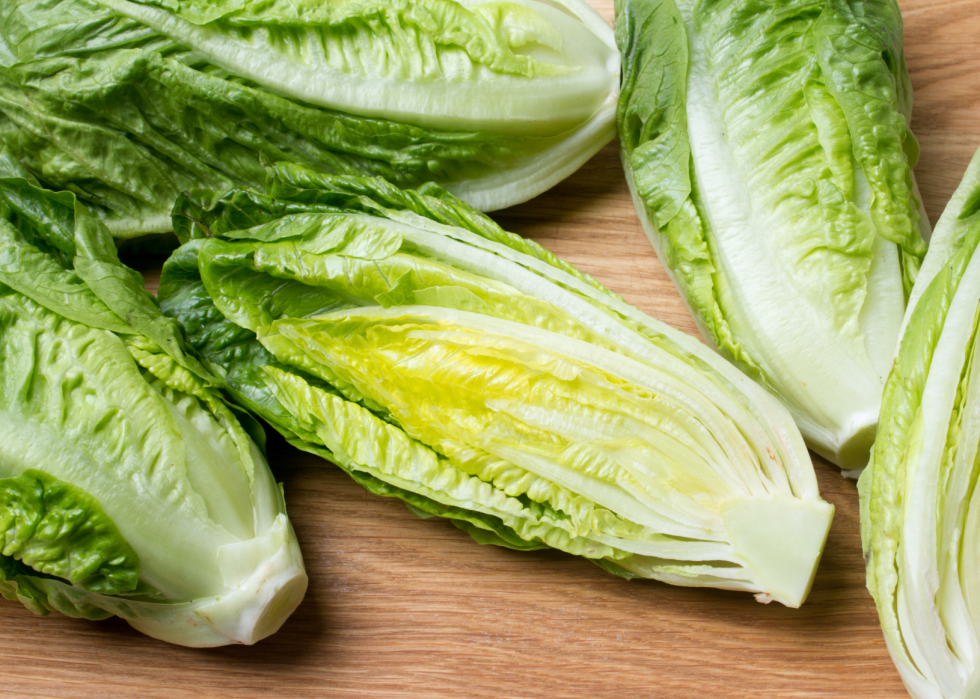
#17. Romaine lettuce (raw)
- Nutritional fitness score: 0.61
- Known for being: Low-calorie
- Price per 100 grams: $1.55
Another leafy green with dense nutrient content, romaine lettuce contains minerals such as calcium and magnesium, as well as vitamins C and K. It is both low calorie and low carbohydrate and is naturally low in sodium. Romaine can be found in any produce section and is also easy to grow.
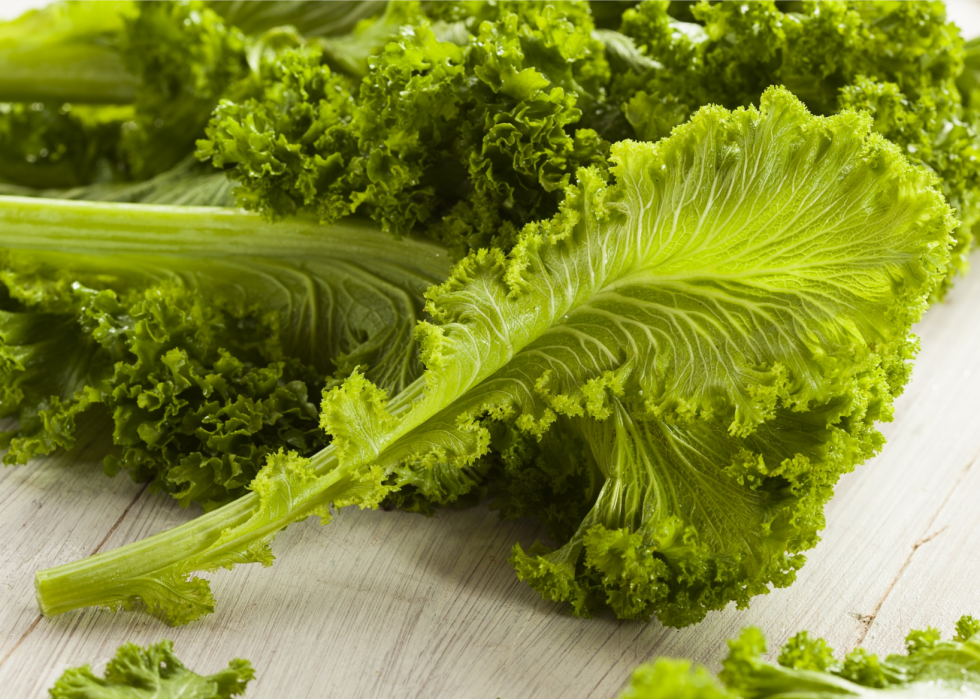
#16. Mustard greens (raw)
- Nutritional fitness score: 0.61
- Known for being: Low-calorie
- Price per 100 grams: $0.29
The leaves of the mustard plant are spicy and a good source of vitamin K, folic acid, magnesium, and calcium. They can usually be found at farmer's markets and have a long growing season that makes them available even during the colder months. While the raw leaves have a strong flavor, cooking them mellows the taste.
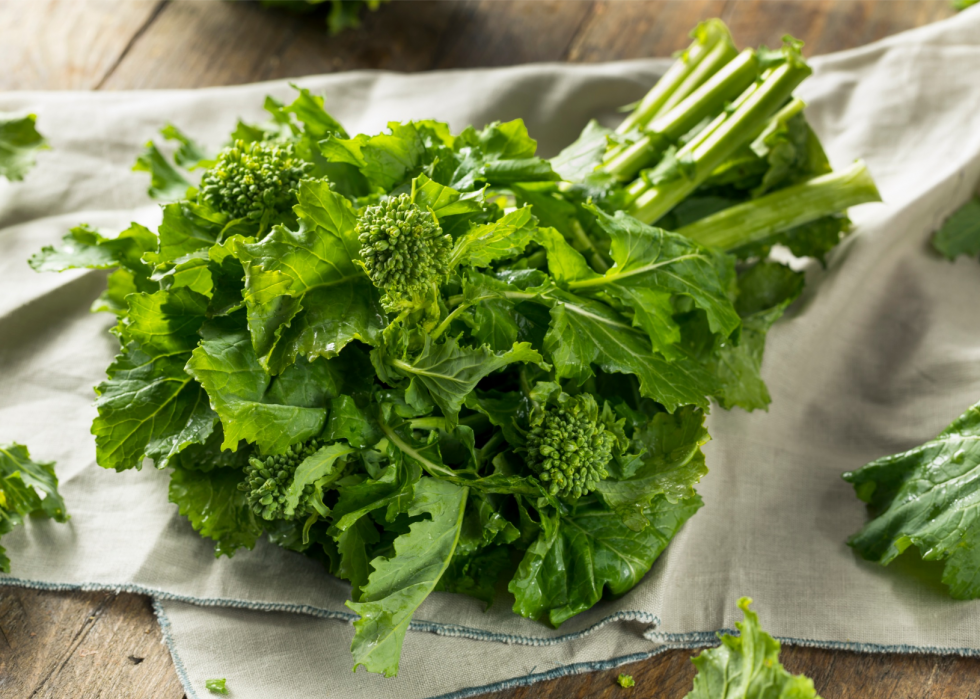
#15. Broccoli rabe (raw)
- Nutritional fitness score: 0.62
- Known for being: Low-calorie
- Price per 100 grams: $0.66
The name sounds the same, but broccoli rabe isn't broccoli. Known as rapini in the U.K., it is from the same family as turnips and is commonly used in Italian dishes. Broccoli rabe has potent doses of vitamins K and A, as well as fiber, calcium, and the carotenoid lutein, which can help with eye health. The entire plant is edible, and it can be blanched, roasted, made into pesto, or added to salads.
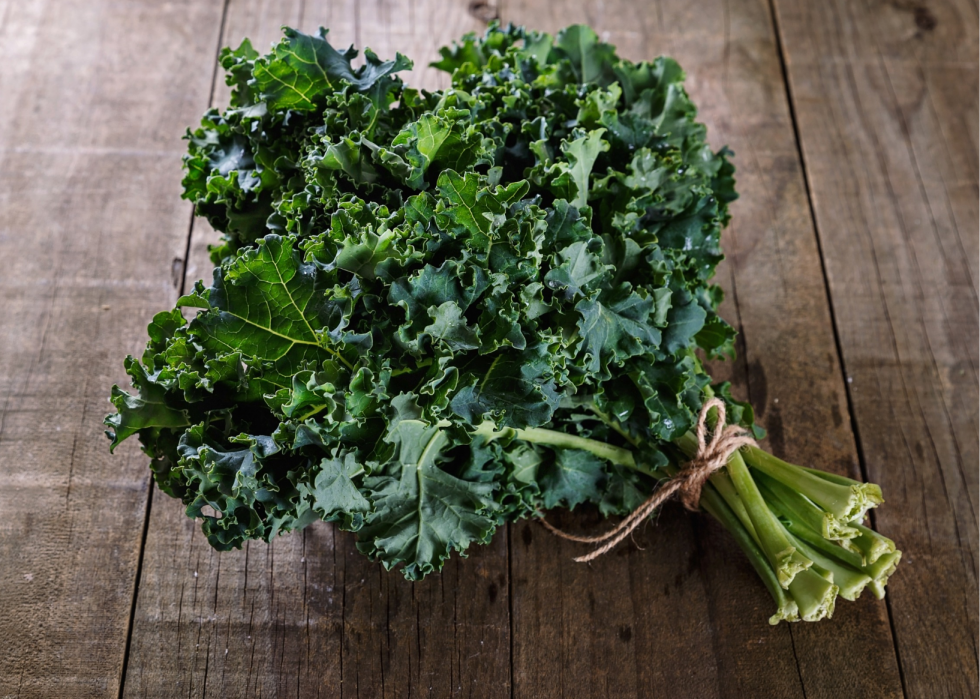
#14. Kale (raw)
- Nutritional fitness score: 0.62
- Known for being: Low-calorie
- Price per 100 grams: $0.62
Part of the cabbage family, kale has become a mainstay in many American recipes and with good reason; it's not only delicious, but it's also one of the healthiest greens around. A 1-cup serving nets close to 3 grams of protein, as well as fiber, folate, vitamins A, C and K, omega-3 fatty acids, and potassium. It's easy to find at the grocery store and even easier to grow. Kale can be served raw in salads, sauteed as a side, or added to baked dishes.
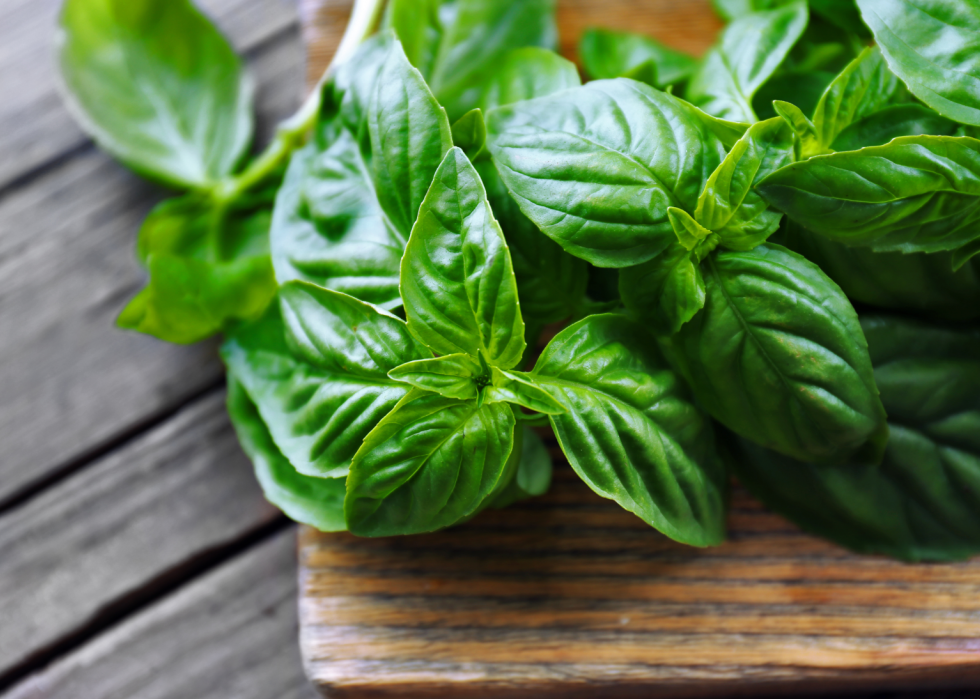
#13. Basil (fresh)
- Nutritional fitness score: 0.63
- Known for being: Low-calorie
- Price per 100 grams: $2.31
While basil is a popular ingredient in Italian recipes, it originated in India, making its way to the Mediterranean via ancient spice routes. Fresh basil can be found at nearly any grocery store, and basil plants can also be cultivated indoors. Basil contains polyphenolic flavonoids, which help protect the body from free radicals, as well as magnesium, vitamin A, and eugenol, which has been shown to have anti-inflammatory properties. It can be served fresh in salads, cooked into recipes, or baked crisp on a pizza.
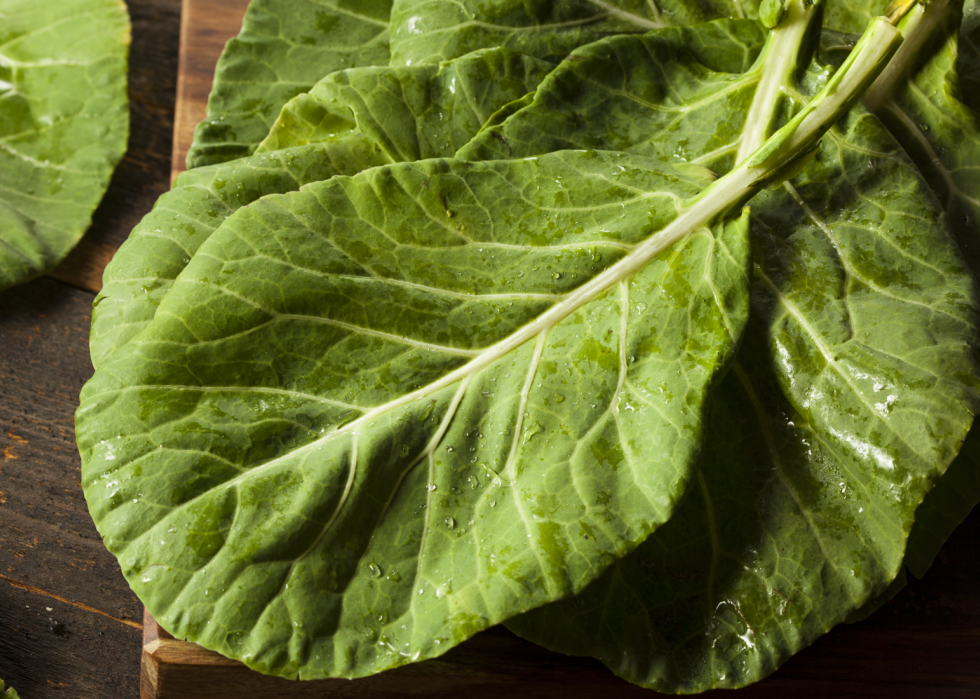
#12. Collards (raw)
- Nutritional fitness score: 0.63
- Known for being: Low-calorie
- Price per 100 grams: $0.74
A southern cooking staple, collard greens are another dark green leafy superfood with a host of health benefits. Part of the same family as cabbage and broccoli, they look and taste similar to kale and can be baked or sauteed into nearly any dish. They have a high amount of sulfurous compounds, which can help detoxify the body and improve digestion, and are rich in vitamins K, B6, and E.
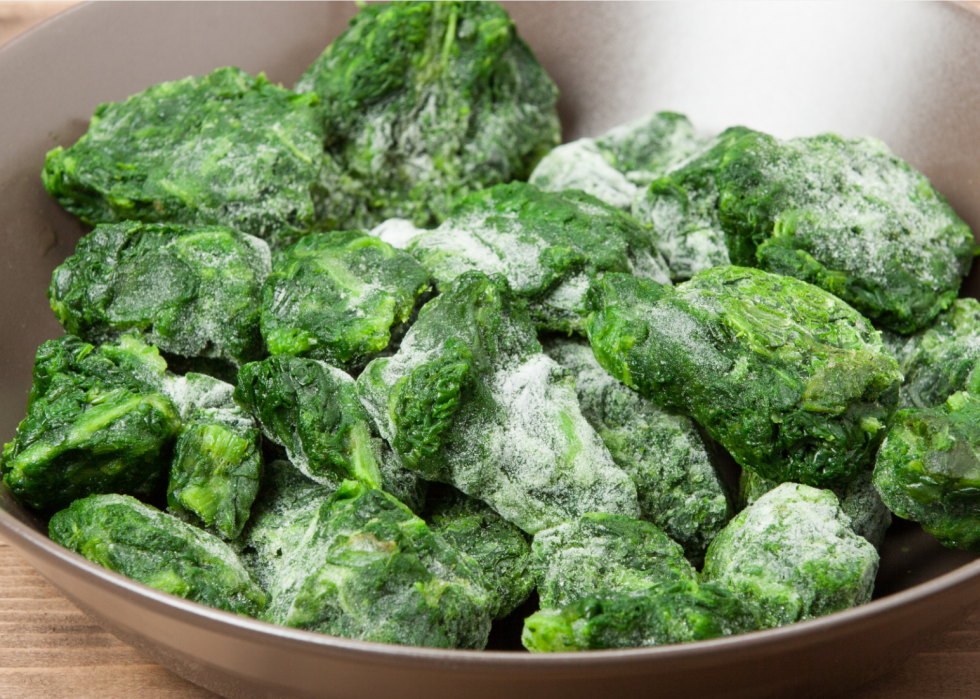
#11. Spinach (frozen)
- Nutritional fitness score: 0.64
- Known for being: Low-calorie
- Price per 100 grams: $1.35
While fresh over frozen is often the first choice, frozen spinach contains more nutrients than raw spinach. Spinach condenses when cooked or frozen, so a small container of frozen spinach has a higher volume and therefore more nutrition. Aside from salads or sandwich toppings, frozen spinach works in nearly any recipe that calls for fresh and is an easy addition to soups, dips, or main baked dishes.
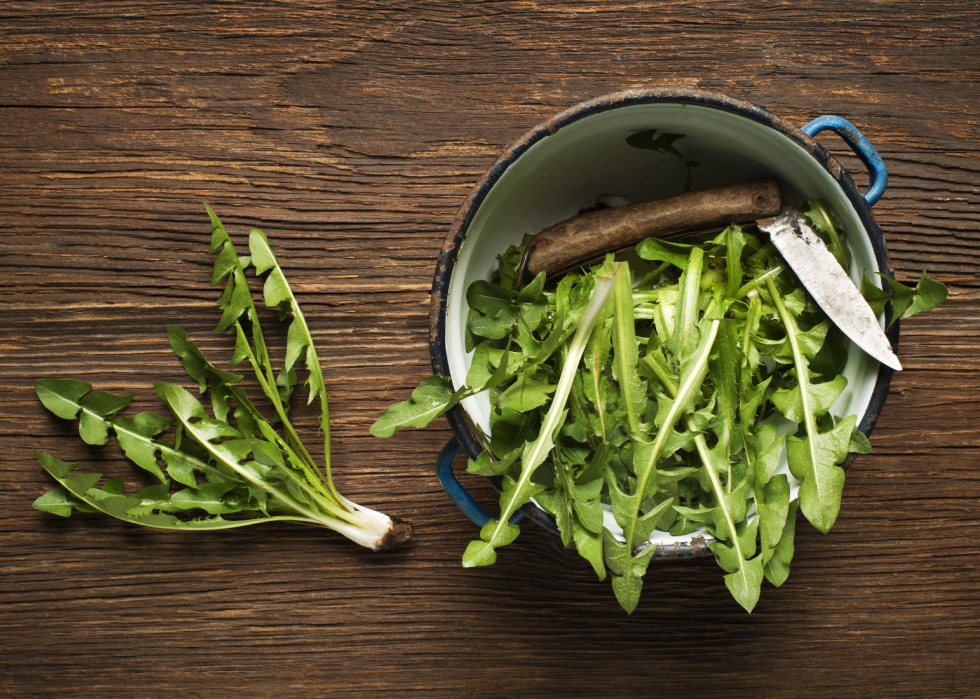
#10. Dandelion greens (raw)
- Nutritional fitness score: 0.64
- Known for being: Low-calorie
- Price per 100 grams: $0.27
Despite being considered a nightmare by most gardeners, dandelion greens have been used for medicinal purposes for thousands of years. With vitamins A, C, and K, as well as folate, iron, magnesium, and potassium, this common weed is not only highly nutritious but has a delicate flavor similar to arugula. Its heavy dose of antioxidants is thought to help prevent cellular damage, and it contains a type of soluble fiber called inulin, which is purported to aid intestinal issues. It is often dried and used in tea but can also be added raw to salads or sauteed and wilted as a side.
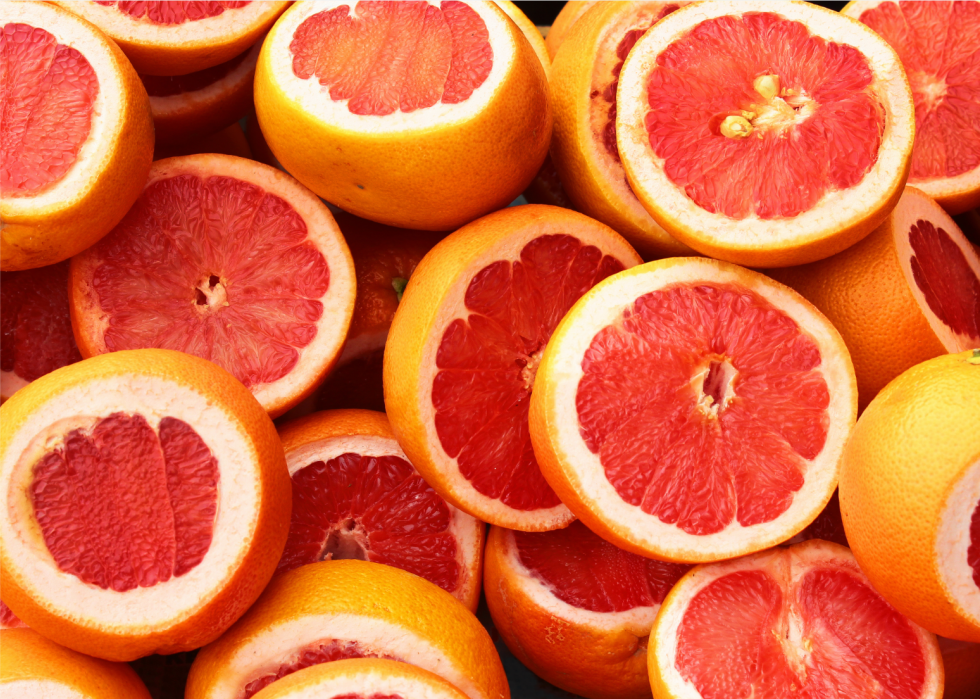
#9. Pink and red grapefruit (raw)
- Nutritional fitness score: 0.64
- Known for being: Rich in carbohydrates
- Price per 100 grams: $0.27
Like their paler siblings, pink and red grapefruits are full of nutrients and antioxidants. But this colorful fruit also has the bonus of the carotenoid phytonutrient lycopene, which is thought to help prevent certain cancers. Grapefruit can sometimes have a countereffect when interacting with medications, especially those used to treat high blood pressure or cholesterol, so patients should check with their doctors before consuming whole grapefruit or grapefruit juice.
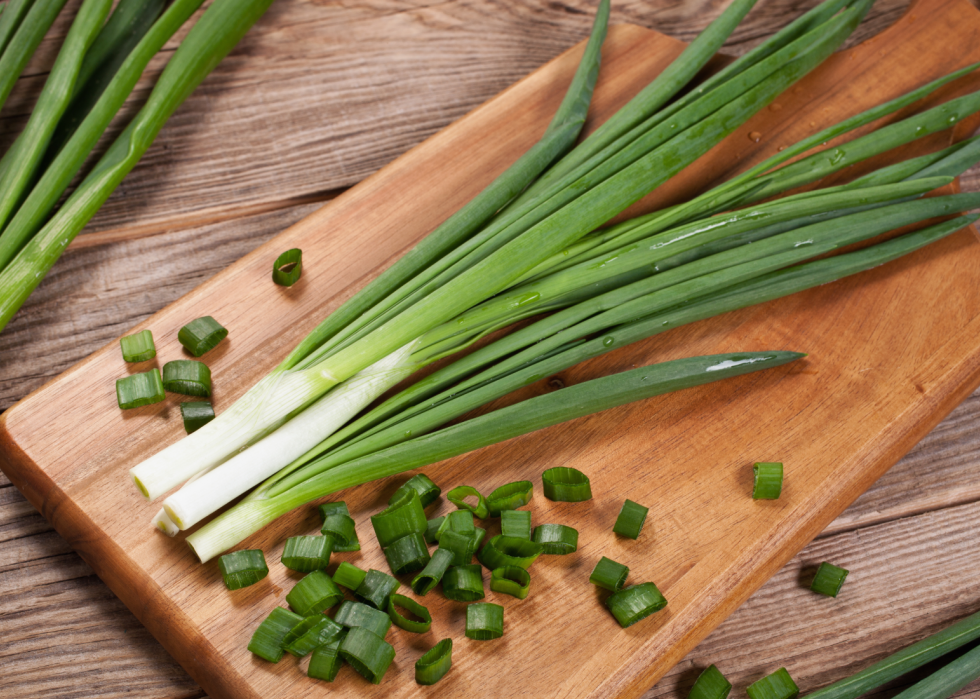
#8. Onions (young green)
- Nutritional fitness score: 0.65
- Known for being: Low-calorie
- Price per 100 grams: $0.51
Green onions, also known as scallions, are a low-calorie garnish or salad topper with a myriad of health benefits. Just 1 cup of green onions provides 95% of the recommended vitamin A allowance, as well as high doses of vitamin K and vitamin C. Green onions, are milder than white onions, and they can be added to dips, sprinkled on top of baked dishes, or lightly sauteed with olive oil and garlic.
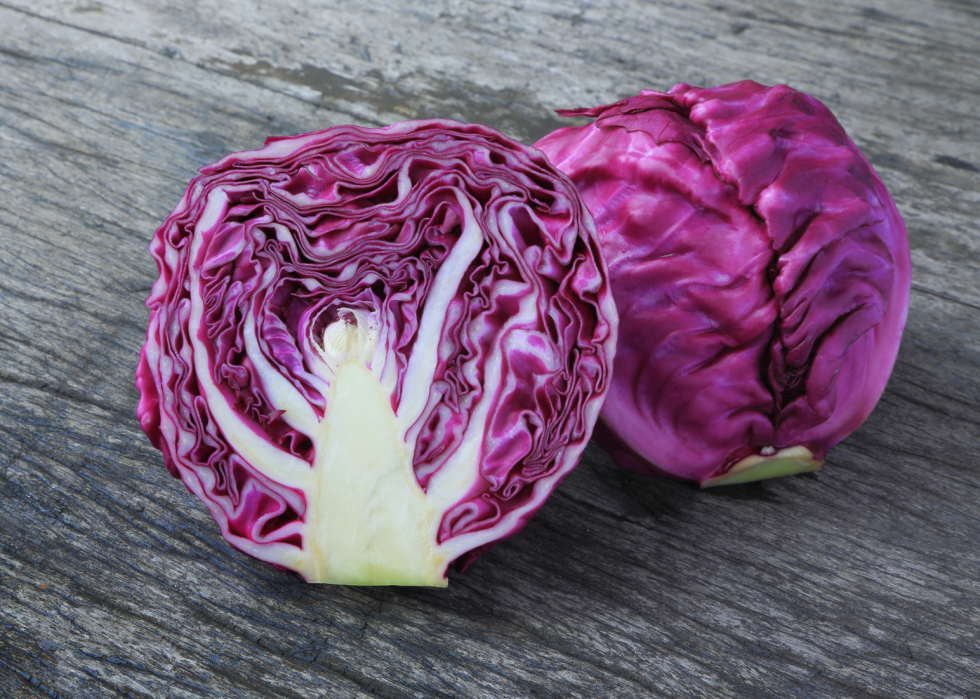
#7. Red cabbage (raw)
- Nutritional fitness score: 0.65
- Known for being: Low-calorie
- Price per 100 grams: $0.12
Red or purple cabbage is a cruciferous vegetable grown all over Europe, Asia, and Africa, and are sold in any U.S. supermarket or gourmet shop. It contains essential nutrients such as vitamins A, D, and K, along with folate, niacin, and fiber. Cruciferous vegetables may lower the risk of some cancers, including breast cancer and colorectal cancer.
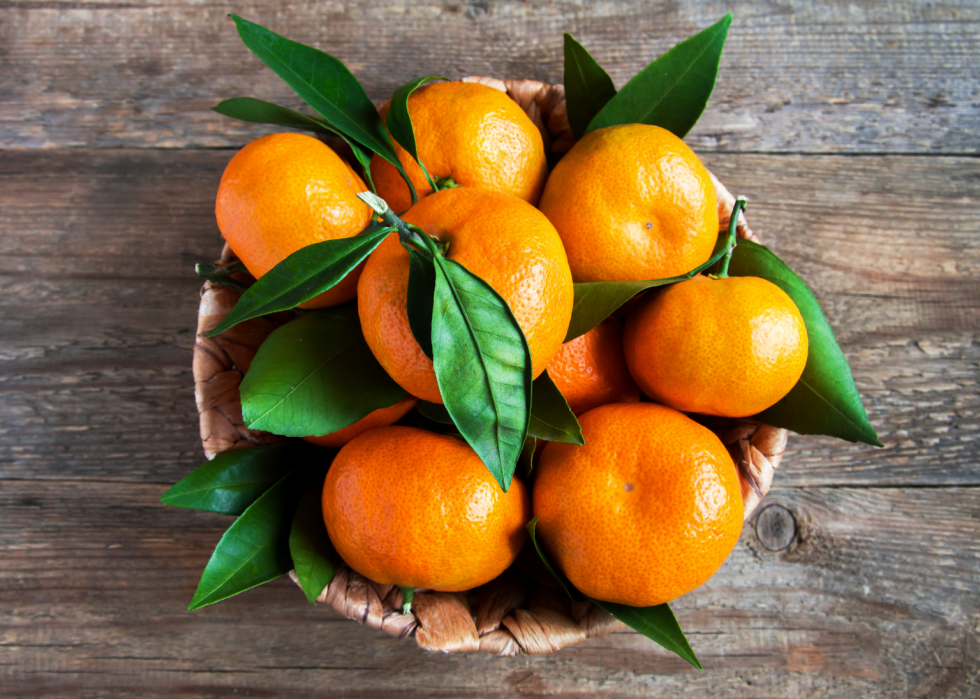
#6. Tangerines (raw)
- Nutritional fitness score: 0.67
- Known for being: Rich in carbohydrates
- Price per 100 grams: $0.29
Originating in Tangier, Morocco, tangerines are a cousin to the mandarin orange, but they are smaller with softer skin. Like most citrus fruits, they are high in vitamin C, as well as folate and beta-carotene. Less sweet than oranges, they have a stronger flavor and work well in salads or can be peeled and eaten as a healthy snack.
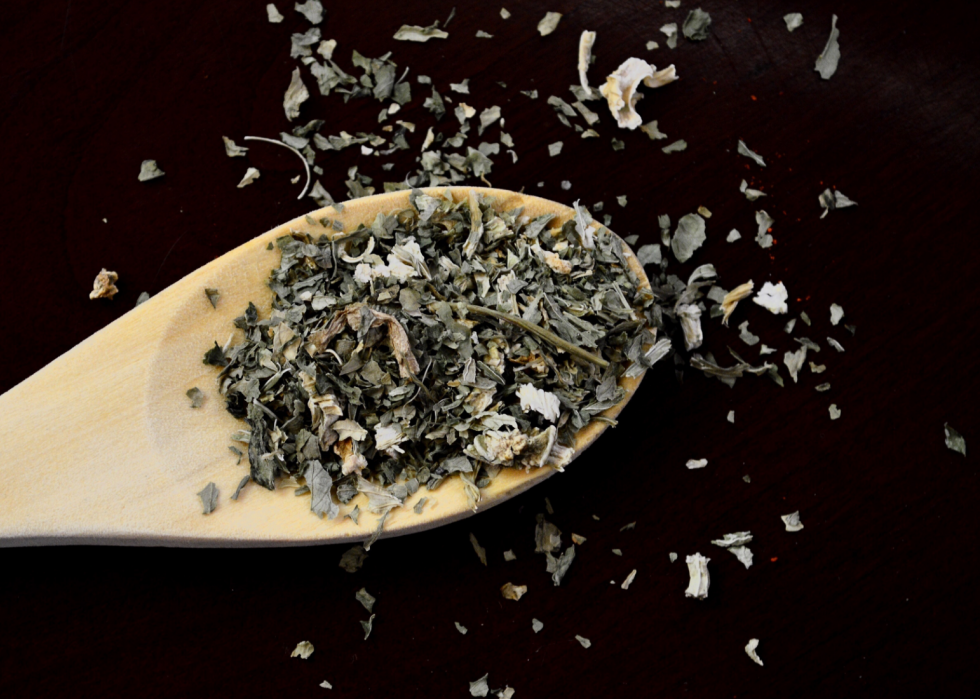
#5. Celery flakes (dried)
- Nutritional fitness score: 0.68
- Known for being: Low-calorie
- Price per 100 grams: $6.10
Celery, which is indigenous to the Mediterranean region, has long been used by various cultures for its medicinal properties. While eating and juicing fresh celery has become all the rage these days, celery flakes, which are dehydrated celery, are also a healthy option and can be added to salads, marinades, or as part of a dry rub for meats. In addition to a savory flavor, celery flakes contain potassium, calcium, magnesium, and vitamins A, B, and C.
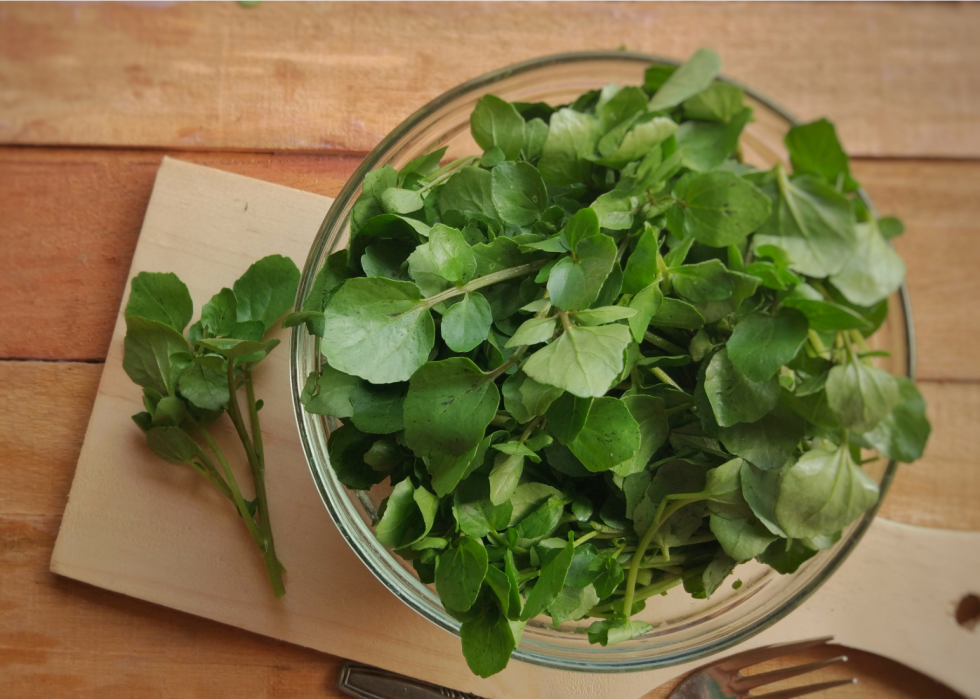
#4. Watercress (raw)
- Nutritional fitness score: 0.68
- Known for being: Low-calorie
- Price per 100 grams: $3.47
Low in calories but high in nutrition, 1 cup of watercress provides more than 100% of the daily recommended allowance of vitamin K. Watercress also contains vitamins C and A, calcium, and manganese. Watercress was ranked #1 in nutritional density in a 2014 study by the Centers for Disease Control and Prevention, and its high antioxidant content can help protect against free radicals.
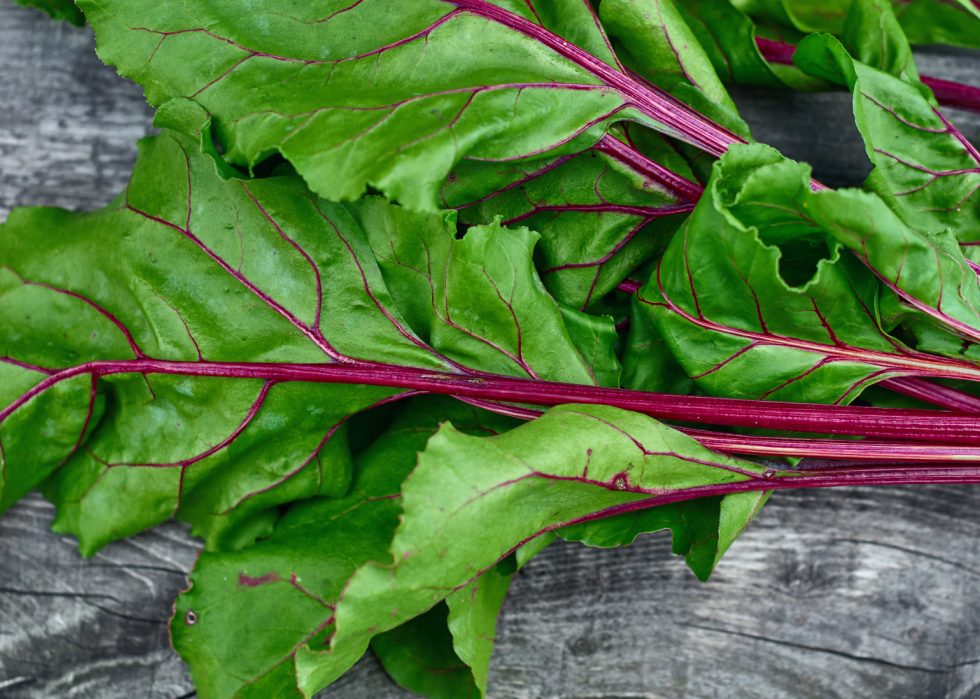
#3. Beet greens (raw)
- Nutritional fitness score: 0.70
- Known for being: Low-calorie
- Price per 100 grams: $0.48
The leafy top of the beetroot plant, beet greens have more nutritional value than the root itself. They are high in vitamins A, C, and K, and flavonoids B-carotene and lutein, which may help in cancer prevention. They can be found at farmer's markets year-round and can be added to salads, baked, or sauteed.
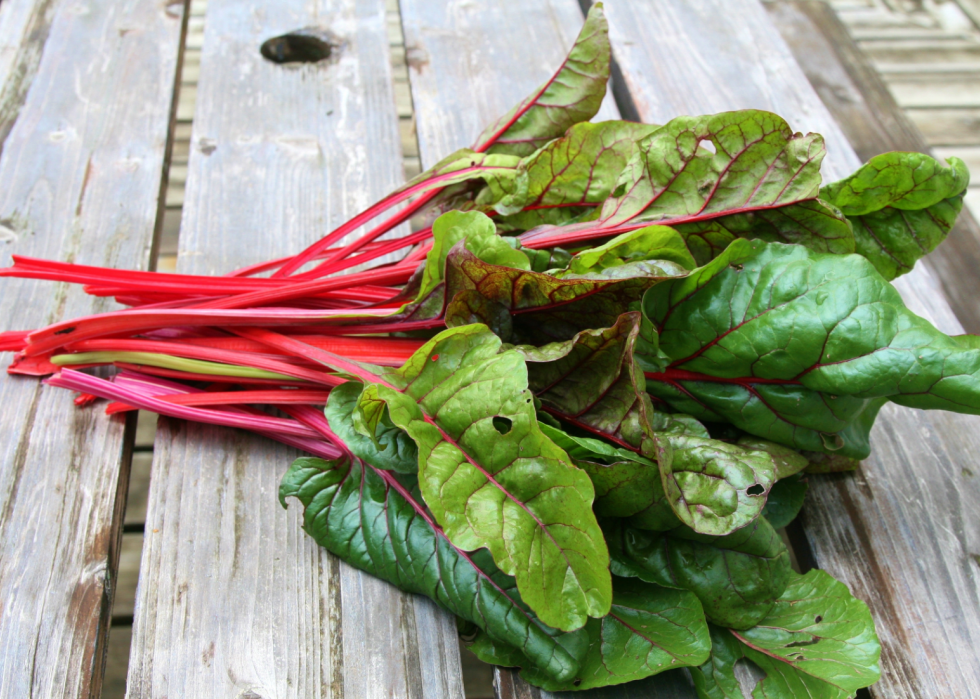
#2. Swiss chard (raw)
- Nutritional fitness score: 0.78
- Known for being: Low-calorie
- Price per 100 grams: $0.29
Part of the same family as beets and spinach, Swiss chard is a leafy green with red, white, or yellow stalks. Available at most supermarkets, a cup of this nutritionally dense green has more than 300% of the daily value of vitamin K, as well as magnesium potassium, iron, and fiber. It works well baked into main dishes, and can also be boiled, sauteed, or roasted.
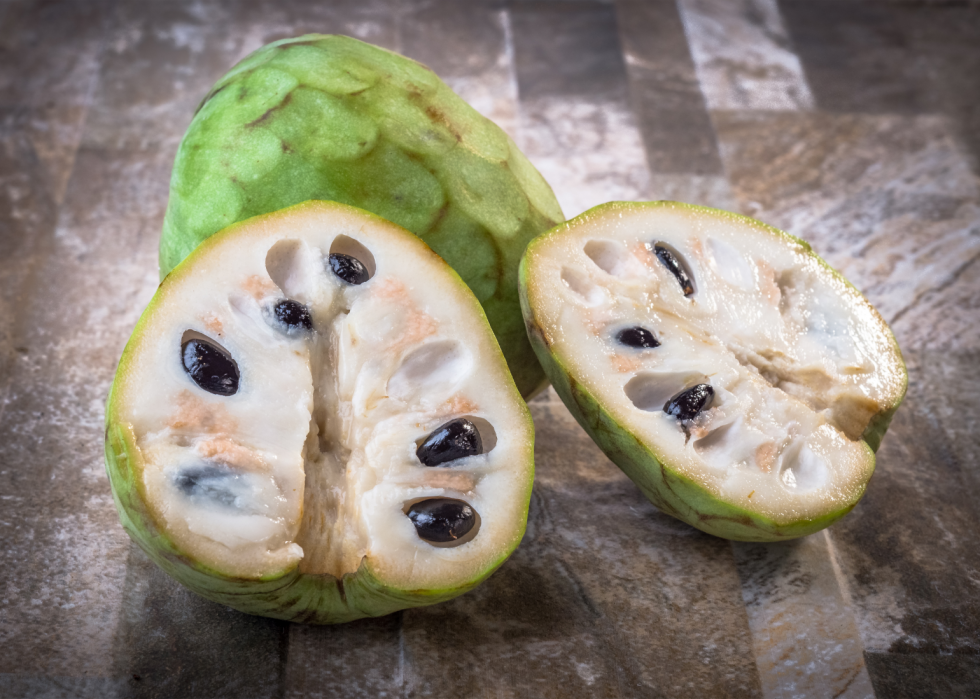
#1. Cherimoya (raw)
- Nutritional fitness score: 0.96
- Known for being: Rich in carbohydrates
- Price per 100 grams: $1.84
Grown in various tropical regions, cherimoya, commonly known as custard apple, looks like pineapple but has a creamy, custardy texture and sweet flavor. Cherimoya is full of antioxidants, vitamin C, and vitamin B6. While the fruit has many health benefits, the skin and seeds should be discarded before eating, as they contain annonacin, a toxin that can affect the brain and nervous system in high doses.



